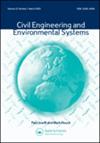使用信息分析值对包括暴露风险在内的检验特征进行评价
IF 1.7
3区 工程技术
Q3 ENGINEERING, CIVIL
引用次数: 2
摘要
所有工程结构在使用过程中都会出现一定程度的退化或损坏。信息收集活动,如检查或结构健康监测,可以减少结构状态概率模型中的不确定性。通过将它们提供的信息与它们所促进的改进的完整性管理策略联系起来,它们的预期价值可以被量化。这个信息值可以通过贝叶斯决策分析得到。在这项工作中,提出了一个信息模型的扩展值,该模型考虑了与暴露于危险环境相关的风险。通过在与结构失效风险相同的尺度上评估这种风险,研究了预期信息质量与危险环境(如海上石油和天然气平台)中工作人员工作小时数之间的关系。一个示例案例研究确定了关于来自自主或远程检查方法的信息的精度、偏差和可靠性的需求,以便将它们视为最佳风险管理策略。本文章由计算机程序翻译,如有差异,请以英文原文为准。
Evaluation of inspection features including exposure risk using a value of information analysis
ABSTRACT All engineering structures degrade or become damaged in service to some extent. Information collection activities, such as inspection or structural health monitoring can reduce uncertainty in probabilistic models of structural condition. By linking the information that they provide to the improved integrity management strategies that they facilitate, their expected value can be quantified. This value of information can be obtained using Bayesian decision analysis. In this work an extended value of information model is presented that accounts for the risk associated with exposure to a hazardous environment. By evaluating this risk on the same scale as the risk of structural failure, the relationship between the expected quality of information and the number of staff-hours in a hazardous environment (such as an offshore oil and gas platform) is investigated. An example case study identifies the requirements regarding the precision, bias, and reliability of information from autonomous or remote inspection methods, for them to be considered as an optimal risk management strategy.
求助全文
通过发布文献求助,成功后即可免费获取论文全文。
去求助
来源期刊

Civil Engineering and Environmental Systems
工程技术-工程:土木
CiteScore
3.30
自引率
16.70%
发文量
10
审稿时长
>12 weeks
期刊介绍:
Civil Engineering and Environmental Systems is devoted to the advancement of systems thinking and systems techniques throughout systems engineering, environmental engineering decision-making, and engineering management. We do this by publishing the practical applications and developments of "hard" and "soft" systems techniques and thinking.
Submissions that allow for better analysis of civil engineering and environmental systems might look at:
-Civil Engineering optimization
-Risk assessment in engineering
-Civil engineering decision analysis
-System identification in engineering
-Civil engineering numerical simulation
-Uncertainty modelling in engineering
-Qualitative modelling of complex engineering systems
 求助内容:
求助内容: 应助结果提醒方式:
应助结果提醒方式:


